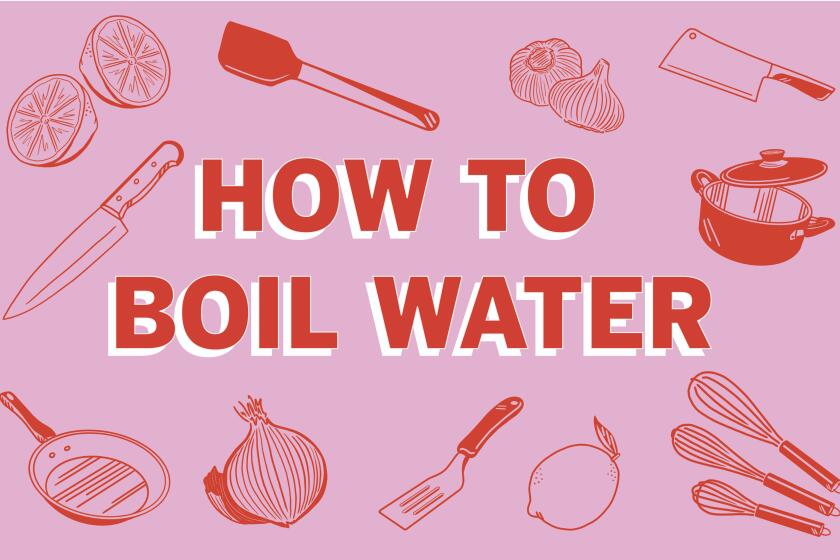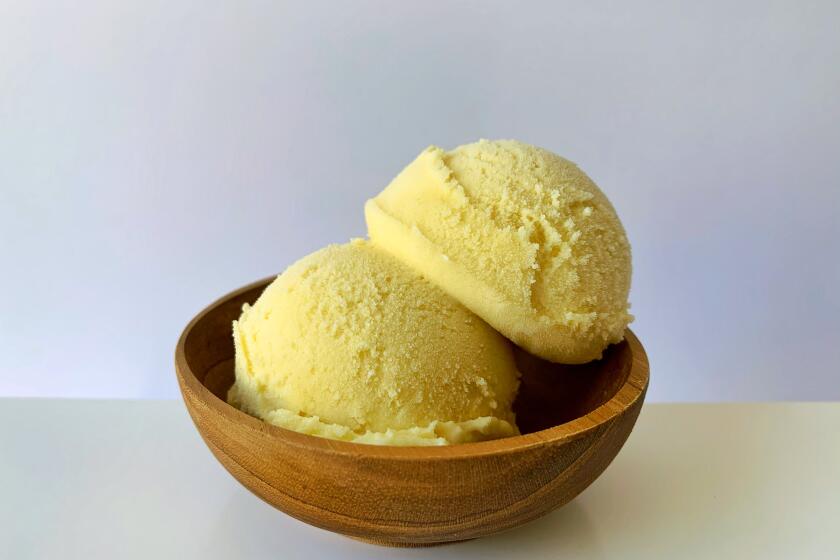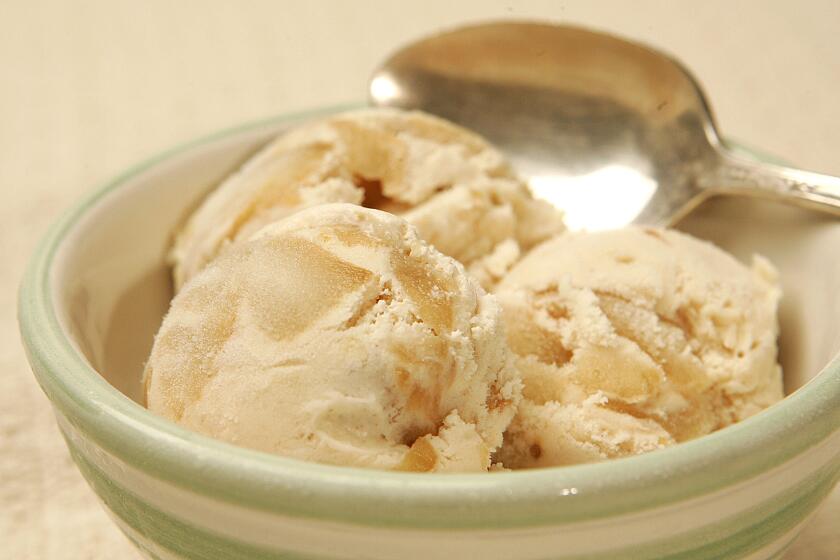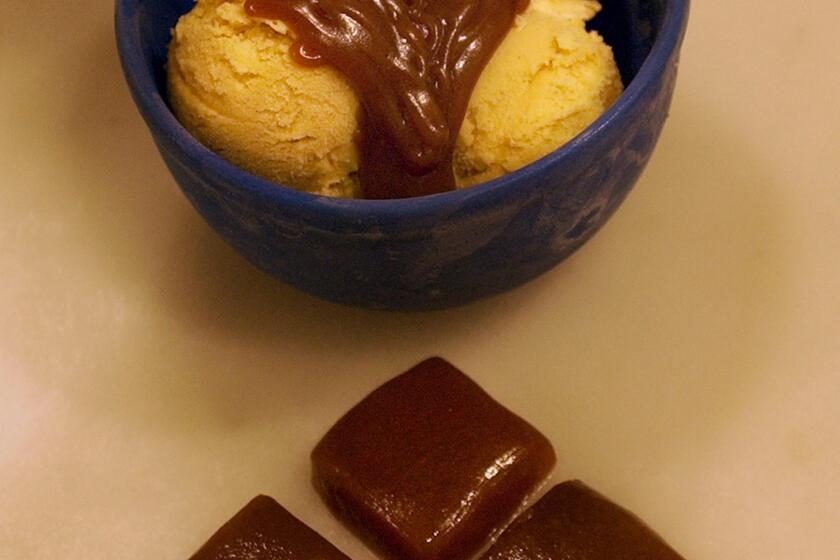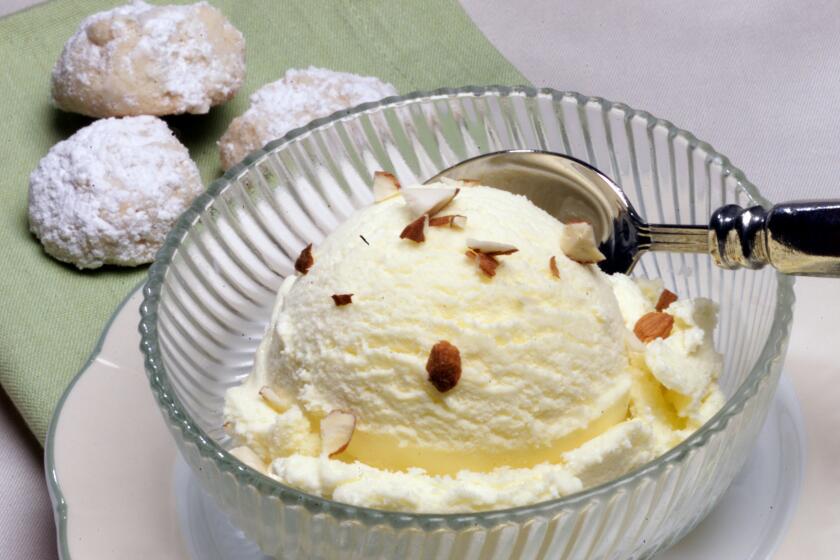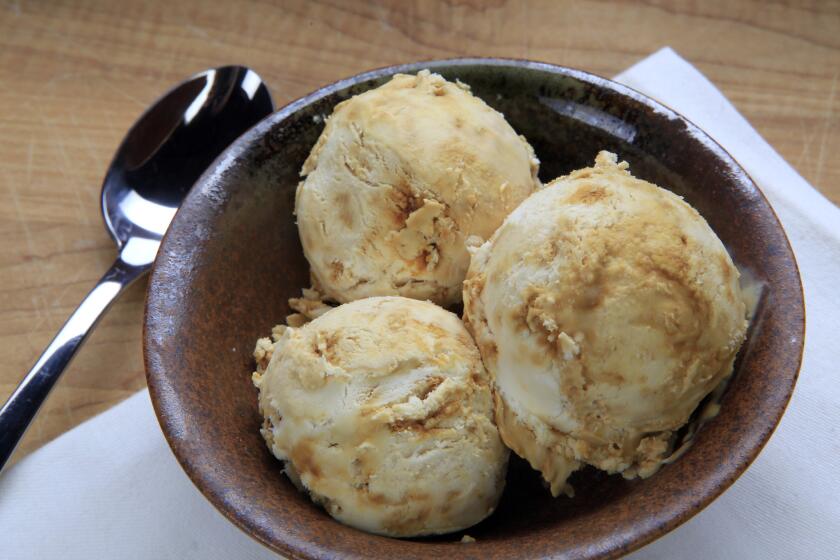Egg yolks are the key ingredient to make the best ice cream
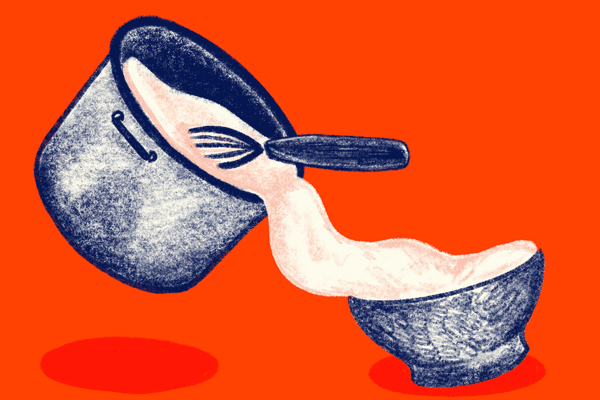
- Share via
How to Boil Water
With so many of you having to stay home and cook for the first time — ever or more than you have in a long time — we get that it can be overwhelming to have to cook all your meals from scratch. So, we’re here to get you started.
Each day we’re going to post a new skill here and go in detail about how to do it — a resource for cooking basics so you can get food on the table and get through this.
A series of simple tutorials for making some basic recipes at home.
Lesson 19: Custard ice cream
Though ice cream may not seem like an essential food, having a pint of homemade ice cream in the freezer at a time like now can be a godsend. Remember how happy you were the last time you were rummaging through the kitchen in desperation and came across a forgotten pint of Ben & Jerry’s in the back of the freezer? Yeah, I thought so.
And I’m not talking about just any kind of ice cream but specifically custard ice cream, the old-fashioned kind made with lots of egg yolks, also known in some regional parts of the U.S. as a “concrete” or frozen custard.
Egg-yolk-thickened ice cream — as opposed to churned sweetened heavy cream and milk — involves a bit of cooking, which is probably why most people simply stick with seemingly easier methods like the traditional cream-only way or the cornstarch-and-cream-cheese-thickened method favored by Jeni’s. But the flavor of custard ice cream, and the texture the yolks add — smooth, thick and dense, with a pleasant chewiness — can’t be matched. It’s also incredibly easy to make once you arm yourself with the right knowledge.
First, you’re making a custard. If you’ve never understood what that word means, it’s a mix of eggs and dairy. But instead of whisking it together to make baked custard like crème brûlée — where the heat of the oven will set the eggs in the cream to thicken it — you’re going to cook this one on the stove. When you do that, there is really only one important rule: Keep it moving.
The texture of a stove-cooked custard relies on the egg yolks cooking evenly and gently, so it may take about 10 minutes of steady stirring over medium heat. All the while you’re thinking to yourself, “Can’t I hurry this up?” Don’t. Sit with the process and use this moment of steady, stirring zen to turn off your brain and zone out.
Syrian baker Maher Nakhal whips up bouza, the stretchy Middle Eastern ice cream at Le Mirage Pastry, his bakery in Anaheim.
In many recipes you may have read in the past, you probably noticed that they called for heating the dairy, then slowly whisking it into eggs or yolks to temper them (food-speak for gradually adjusting two temperatures to match) before adding the custard back to the pan to cook. But I switch the order: I whisk sugar and egg yolks together first; the sugar coats the egg proteins and insulates them, protecting them, to a degree, from becoming scrambled eggs in the pan if overheated. This also allows me to pour the dairy straight into the pan and cook everything together. I’ve made custards where you heat the dairy first and have found no difference in flavor.
Next, you need the right tools — a whisk and a spoon or small rubber spatula. An ice cream machine — which many of us have lurking in our cabinets — is nearly essential, but I include how to make it with just a blender too. An instant-read thermometer, like the ones used to test meat for doneness, will help take out any guesswork.
As you cook and steadily stir the custard over medium heat, it won’t look like it’s doing much for about 5 minutes. Then, all of a sudden, you’ll smell the richness of the yolks and milk and sugar; it will smell like, well, ice cream. Once you’re at this point, begin watching for the texture of the custard to change. Notice how thin and watery it was before and now how its consistency morphs into that of heavy cream, with a thickness that forms smooth waves when stirred and a gently rippling wobble when you knock on the side of the pan.
Lift your spoon or spatula out of the custard and notice if it coats it like a thin cheese sauce or runs off like water. If it’s the former, run your finger through the custard on the spoon and see if the trail left behind holds, with no custard running into it. If so, you’ve just made a successful custard. If you have that thermometer handy, you can skip that spoon method and place the tip of the thermometer in the center of the custard (don’t rest it on the bottom of the pan, though) and the temperature should read between 175 and 180 degrees.
Either way, remove it from the heat and pour it into a bowl. I like to cook the egg yolks with milk only, then stir the cream into the custard after it comes off the heat to help cool it off immediately, preventing it from cooking any further. Now, all you have to do is cool the custard to room temperature, which should take no more than 30 minutes, then refrigerate it until cold so that it freezes well once it is poured into the ice cream machine. A couple of hours is fine but overnight is even better.
If you don’t have an ice cream machine, first off, look them up and buy one. My favorite is this Cuisinart model, which is affordable and works perfectly for churning this amount of ice cream. If that isn’t an option, you can still make ice cream but it will require a bit more time and effort.
Of all the ways out there to make ice cream without a machine, you’re better off using the blender method to replicate that of the dedicated machine. Simply pour your custard into a shallow pan, like an 8-inch round cake pan, and place it in the freezer for 30 minutes. Then pour it into a blender and blend on high speed for 10 seconds. Return the custard to the pan and place back in the freezer for 30 minutes. Repeat this process over and over again until the custard is thickened to the consistency of, well, ice cream.
By not having a machine to do the simultaneous freezing and mixing for you, you’ll have to do it yourself, but thanks to the egg yolks in the ice cream, the texture won’t suffer at all and you’ll find that all that effort is well worth it the next time you want to comfort-eat a pint after a stressful day (that’s every day now, right?) and not to have to wrestle with a trip to the grocery store.
Old-Fashioned Custard Ice Cream
Want more ice cream recipes?
